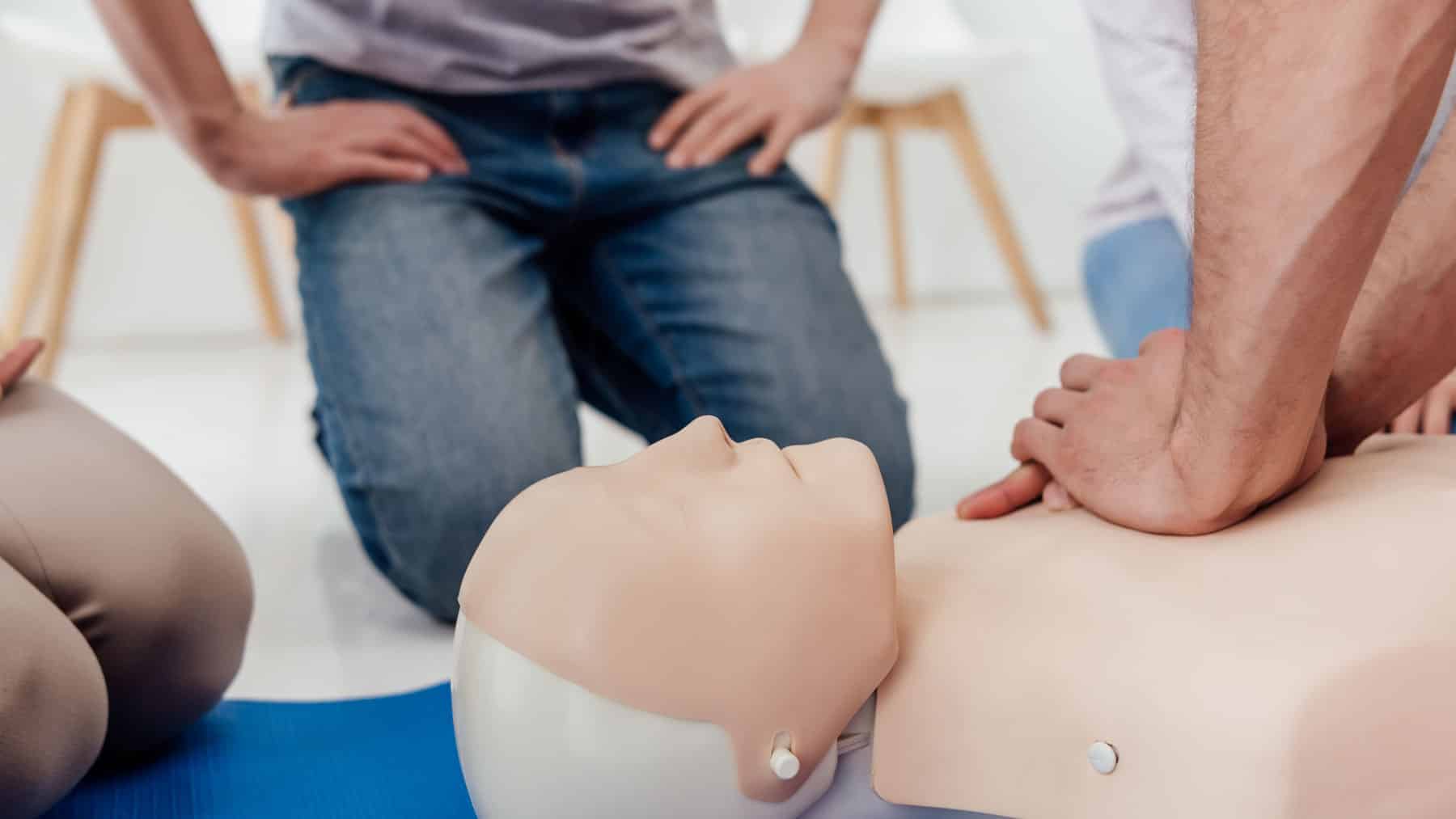The abbreviated terms CPR and BLS are commonly used in the medical field. While both are crucial in emergencies, they differ in training and application. This blog post will explore the disparities between CPR and BLS and their certifications.
Cardiopulmonary Resuscitation (CPR)
CPR stands for Cardiopulmonary Resuscitation, an emergency procedure performed on individuals whose hearts have stopped beating or breathing. This life-saving technique involves a combination of chest compressions and rescue breaths that maintain an oxygenated blood flow to vital organs until professional medical help arrives.
CPR Certification
CPR certification is for non-medical professionals who want the knowledge to help during an emergency. The CPR certification process teaches individuals the necessary skills to perform CPR effectively. CPR certification may cover using an automated external defibrillator (AED) but no other medical equipment. You can attend CPR certification programs in person or opt for online courses.
Basic Life Support (BLS)
BLS, or Basic Life Support, is a more comprehensive training that encompasses CPR techniques and also teaches other essential life-saving skills. BLS certification programs cover CPR for all age groups, automated external defibrillators (AEDs), recognition and management of choking, and the basics of managing respiratory and cardiac emergencies.
BLS Certification
BLS certification is often required for healthcare professionals, including nurses, doctors, and paramedics. The certification includes CPR and other critical life support techniques, such as recognizing and managing respiratory distress, choking, and other medical emergencies.
BLS CPR certification expands on the layperson’s CPR training by including a more extensive curriculum on emergency care. Individuals who obtain BLS CPR certification can expect to learn more advanced techniques to manage cardiac arrests, airway obstructions, and other life-threatening situations. This additional training enables BLS-certified individuals to provide substantially greater care until emergency medical services arrive.
CPR vs. BLS
While CPR and BLS involve life-saving techniques, the main difference lies in the level of training and the extent of skills taught. CPR primarily focuses on chest compressions and rescue breaths for individuals experiencing cardiac arrest or respiratory distress. On the other hand, BLS encompasses CPR techniques and other essential skills needed to manage various medical emergencies.
CPR Training Benefits
When someone collapses, each passing moment decreases their chances of survival. CPR training participants gain the confidence and skills to respond to emergencies effectively. The knowledge gained in CPR classes can bridge the gap between life and death, offering victims a vital lifeline until professional help arrives.
Competent Performance
CPR training classes train individuals to recognize the signs of cardiac arrest and respond promptly, significantly increasing survival rates. The two primary components of CPR are chest compressions and rescue breaths. CPR classes provide the training needed to achieve the correct depth and frequency of chest compressions and properly administer rescue breaths.
Prevention of Panic
CPR training classes equip individuals with the knowledge and skills to face emergencies calmly and confidently. By knowing what to do, participants reduce panic and anxiety, becoming empowered to take immediate action and potentially save a life.
Knowledge That Spreads
The impact of CPR training classes reaches far beyond the classroom walls. Participants become ambassadors, transmitting their knowledge to friends, family, and coworkers. By encouraging others to attend training courses, individuals contribute to building better-prepared communities that can respond to emergencies and save lives.
CPR Recertification
You will need to renew your CPR certification after two years. CPR recertification is required to ensure that individuals maintain their skills and stay up-to-date with guidelines and techniques. This process involves completing a refresher course and demonstrating proficiency in CPR techniques. Recertification can be done through in-person classes or online certification courses.
ACLS.com Offers Online Healthcare Certifications
ACLS.com is an online platform that allows healthcare professionals and individuals to obtain various certifications, including CPR and BLS, through convenient and accessible online courses. Online certification allows individuals to learn at their own pace and complete the training from the comfort of their own homes or workplaces.
The Benefits Of Online Certification
Online certification offers several benefits, such as flexibility in scheduling, the ability to review materials as needed, and the convenience of learning from anywhere with an internet connection.
ACLS.com’s online courses also provide interactive simulations, videos, and comprehensive study materials to enhance the learning experience. By offering online certifications, ACLS.com aims to make life-saving training more accessible and convenient for healthcare professionals.
CPR or BLS?
CPR and BLS are essential life-saving techniques, but their training and scope of skills differ significantly. CPR primarily focuses on chest compressions and rescue breaths, while BLS expands on CPR by including additional skills and knowledge necessary to manage a variety of medical emergencies.
Whether you pursue CPR or BLS certification, online certification courses from ACLS.com offer a convenient and accessible way to obtain the necessary training. Individuals can contribute to a safer and more prepared community by staying certified and up-to-date with life-saving techniques.


